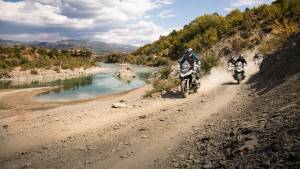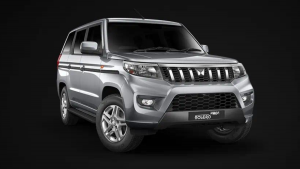Meteoric mark
Team OD
Published: August 26, 2011, 03:56 AM IST
A lot goes into planning a travelogue but the most important thing to keep in mind is the theme. Will the car match the profile of the place I'm going to visit? That's why the previous two travelogues with the Toyota Land Cruiser Prado were a bit off-road in nature; it's no fun endlessly driving a mighty SUV on the road. It has to taste dirt. Similarly, when the Toyota Prius was the car of choice for this travelogue, I had something epic in mind. The Prius is in every way an epic car. It is the world's first standard production full hybrid car developed entirely in-house by Toyota. It was available for sale when most of the other big car manufacturers didn't even have a hybrid concept. It has sold over 12 lakh models worldwide. It has a five-star EuroNCAP safety rating. It has won numerous awards around the world including our green award for 2011. For a long time it was the most fuel efficient and environmentally friendly car in the world.
Though the Prius is well known around the world, it isn't that familiar and identifiable in India. Of course we petrolheads are familiar with the Prius but the general public is a bit oblivious. The common folk gape and stare at the Prius and most wonder if it is the Etios. The futuristic and the bit unconventional interiors of the Prius further add to the wonder. And finally, the price tag sends them into a tizzy.
So, I was on the look-out for a place with an epic yet a downplayed profile. Something that was remarkable but at the same time uncelebrated. Lonar, a small town with a big salt water lake was just that, the ideal destination for me in the Prius. If the lake in the opening picture spread does not look ordinary, you are absolutely right. This lake is actually a crater created by a 20-lakh-tonne meteor that crashed here approximately 81,000 years ago. It resulted in a crater that is 1.8 kilometres wide and 150 metres deep. What makes it even more special is that it is the only hypervelocity meteoric impact crater on basalt rock. I'd have to be a geologist to fully grasp what that really means but the 'only' kind of anything works for me.
The one thing in common with the Prius and Lonar is that both share the underplayed factor. Most people are unaware of such an important historical landmark right here in Maharashtra. It's located around 540 kilometres from Mumbai. The roads to Lonar are excellent compared to the roads that link rural Maharashtra. The route is fairly straight too. From Mumbai you have an option of either heading north to Nashik and then to Lonar via Aurangabad or heading south to Pune and then to Lonar via Ahmednagar. I took the route through Pune as I had to pick up Kshitij. Both the routes are equally good however.
As I've said before, the Expressway and the NH4 has spoilt us. Allowing average speeds of around 80-100kmph, both these roads make me dread other highways and the previous trip to Malvan in the Prado was painfully slow with average speeds of just 40-45kmph. I had the same feeling this time as well but surprisingly, we managed average speeds of over 65kmph and that too with frequent stops for lunch, photography and of course, 'chai'.

From Pune we got on to NH222 till Ahmednagar and then on to NH211 till Wari Godri where we turned right for Jalna and from there we stuck to SH177 and SH183 all the way to Buldhana until reaching Lonar. If you drive non-stop at a steady pace, you can make it from Mumbai to Lonar in less than eight hours, a very do-able trip. The tarmac road is smooth and pothole-free almost throughout. The few rough stretches on the outskirts of Ahmednagar the Prius handled reasonably well with not much in-cabin vibrations.
The Prius suspension adjusts well to Indian roads, keeping in mind that it's a CBU and not tuned for our roads. The car feels planted at high speeds and braking is good too. Overall, driving the Prius never felt monotonous. It has enough grunt and gusto to keep the driver on his toes. It sticks to its charachter of being a very fuel efficient vehicle. It returned 23kmpl on this trip. The large multi-function screen at the centre of the dash displays the fuel consumption by the minute or the total trip distance. It also has an energy monitor which tells you whether the car is running on the internal combustion engine or the battery and indicates when the battery is being charged.
Once in Lonar, I recommend the MTDC resort located bang opposite the crater locally known as the Lonar Sarovar. This place offers the best accommodation in this town and though expensive, it's completely worth it. Those on a budget can risk the lodges with `200 daily rentals.
When we reached the crater's edge, we discovered an eco-system inside that is worlds apart from the barren landscape surrounding the crater. The lake water is so alkaline due to the mineral deposits from the meteor that if the roots of a tree touch it, the tree dies within days. It is the numerous small fresh water springs around the periphery of the lake that sustain the lush green vegetation around the lake.
The walls of the crater however are teeming with vegetation and wild life. We spotted chinkaras and gazelles. It's virtual bird watcher heaven what with egrets, moorhens, herons, coots, white-necked storks, lapwings, grey wagtails, grebes, black drongos, green bee-eaters, tailorbirds, magpies and robins as well as numerous species of migratory birds like flamingos.
Other than the lake, Lonar is also home to 12 temples built on the rim and in the crater itself. The Ellora caves, Daulatabad fort and Ghrishneshwar temple are in the vicinity as are the world renowned Ajanta caves. Anyway you see it, the meteor made Lonar lake and the surrounding region is a destination any travel-happy person with a yen for some historical perspective or for the spectacular is sure to find a rewarding one in more ways than one.
Related Stories
Top Stories
Latest Videos
Most Popular
Network18 Updates
Compare














